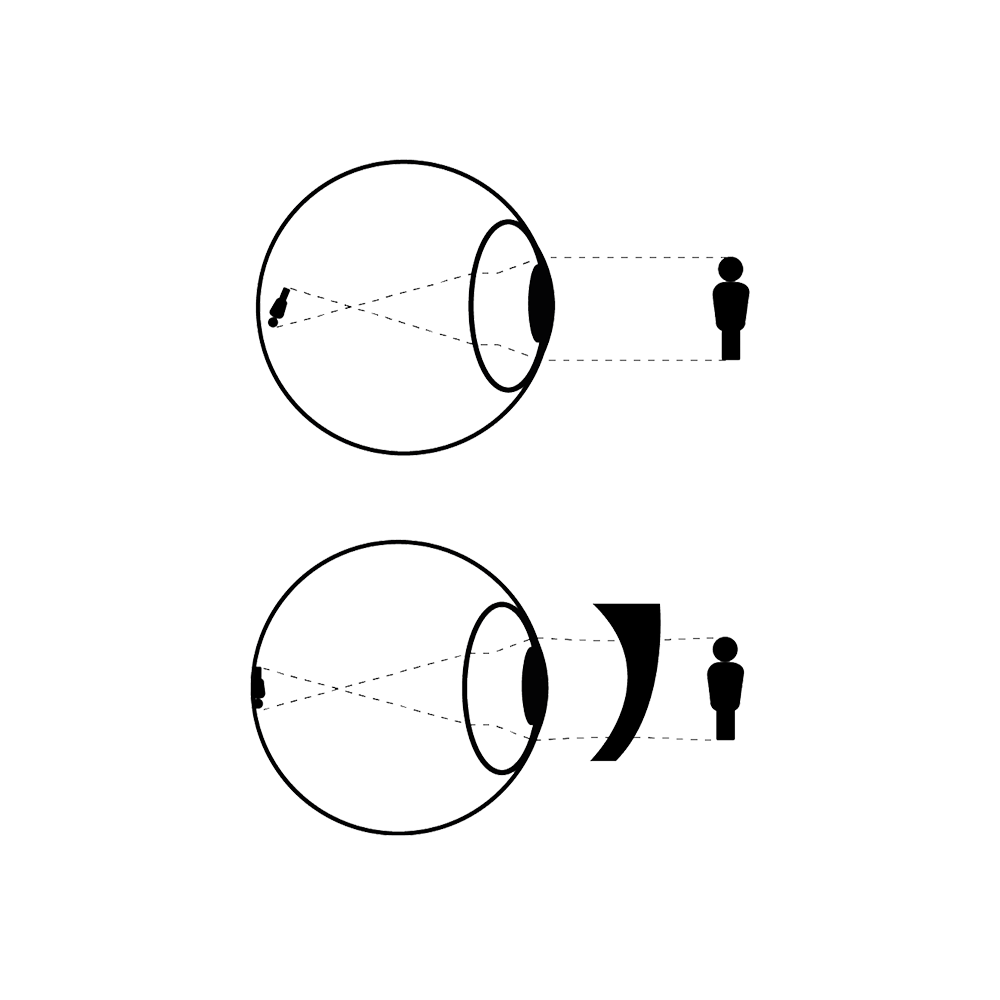
myopie
La myopie, aussi appelée vision de près, est un trouble visuel dans lequel la lumière ne se focalise pas sur la rétine mais en avant de celle-ci. On estime qu’un tiers de la population est aujourd’hui myope, mais ce défaut visuel se corrige facilement avec des verres concaves. La myopie rend les objets éloignés flous tandis que les objets proches restent nets. Certains symptômes peuvent indiquer que vous êtes myope : maux de tête, fatigue générale ou oculaire, vision brouillée, besoin de s’approcher pour distinguer des objets éloignés comme la télévision. Dans les cas de myopie forte, on observe souvent un risque accru de cataracte, de glaucome ou de décollement de rétine.

hypermétropie
L’hypermétropie, aussi appelée presbytie de loin, est un trouble visuel dans lequel la lumière se focalise derrière la rétine au lieu de dessus. Cette condition est souvent héréditaire et présente dès la naissance, bien que de nombreux enfants la compensent naturellement en grandissant. L’hypermétropie rend les objets proches flous tandis que les objets éloignés restent nets. Les symptômes les plus courants incluent une fatigue oculaire, des maux de tête, une vision brouillée de près et un inconfort lors de la lecture prolongée. Les cas légers peuvent être compensés par l’effort d’accommodation de l’œil, mais cela devient plus difficile avec l’âge et nécessite souvent des verres correcteurs.

Astigmatism
L’astigmatisme est un trouble visuel dans lequel la cornée ou le cristallin présente une forme irrégulière, provoquant une focalisation inégale de la lumière sur la rétine. Il en résulte une vision floue à toutes les distances, souvent accompagnée de maux de tête, de fatigue oculaire ou d’un inconfort visuel. L’astigmatisme peut apparaître seul ou associé à la myopie ou à l’hypermétropie. Comme il peut parfois passer inaperçu lors des examens de routine, de nombreux cas ne sont détectés que lorsque les symptômes deviennent perceptibles. La correction se fait à l’aide de verres cylindriques, qui compensent la courbure irrégulière de l’œil et restaurent une vision claire et équilibrée.
PLUS de 45 ans
Presbytie
La presbytie est une évolution naturelle du processus de vieillissement de l’œil et concerne tout le monde à terme. Il ne s’agit pas d’une maladie, mais d’une perte progressive de la souplesse du cristallin, réduisant la capacité de l’œil à faire la mise au point sur les objets proches. La presbytie apparaît généralement vers l’âge de 45 ans et ne doit pas être confondue avec l’hypermétropie, même si les deux affectent la vision de près. Les symptômes les plus fréquents incluent une vision brouillée à distance de lecture normale, le besoin d’éloigner le texte pour mieux le voir, ainsi que des maux de tête ou une fatigue oculaire lors de travaux de près. La correction est simple et efficace, le plus souvent grâce à des lunettes de lecture ou des verres progressifs.

